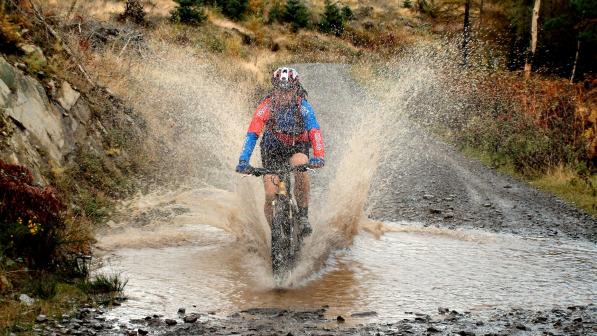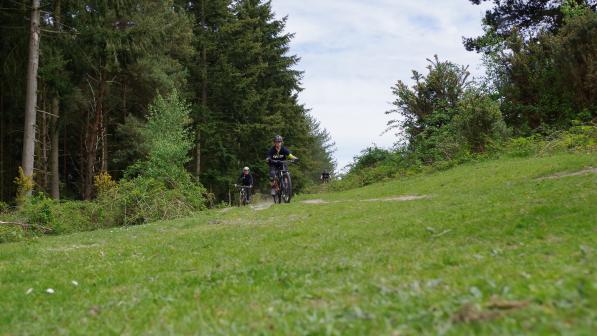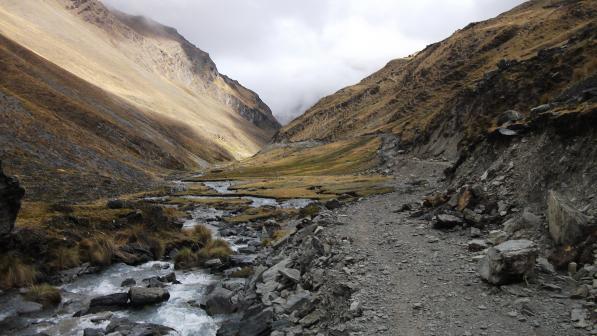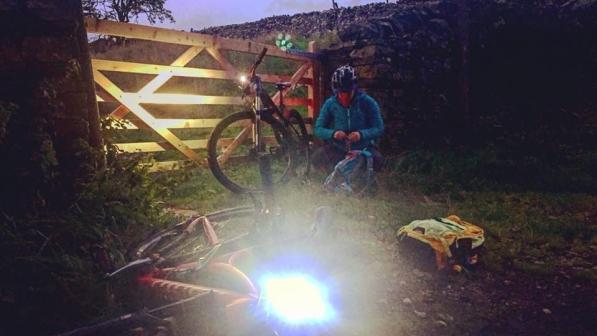Mountain bike trail grading guide

Cross-country singletrack trails at dedicated mountain bike (MTB) centres use a grading system to inform riders of the difficulty of their various trails.
As good as any grading system may be, trail surfaces will vary throughout the year – and particularly during or after heavy rain. If in doubt, speak to the rangers, or stop and walk through a section.
Mountain biking is a potentially hazardous activity carrying a significant risk. Always ride within your own abilities.
| Cross country singletrack – trail guides | Suitable participants and bikes | Trail and surface types | Gradients and technical features | Suggested fitness level | Cycling UK courses to lead on this grade |
|---|---|---|---|---|---|
| Green – easy |
Beginner/novice cyclists Basic bike skills required Most bikes and hybrids |
Relatively flat and wide The trail surface may be loose, uneven or muddy at times May include short flowing singletrack style sections |
Climbs and descents are mostly shallow No challenging features |
Suitable for most people in good health |
Trail Leader certificate |
| Blue – moderate |
Intermediate cyclist/mountain bikers with basic off-road riding skills Mountain bikes or hybrids |
As green plus specially constructed singletrack Trail surface may include small obstacles of roots and rock |
Most gradients are moderate but may include short steep sections Includes small technical trail features (TTFs) |
A good standard of fitness can help |
Trail Leader certificate (for blue routes with no obstacles or steps/ rock gardens) |
| Red – difficult |
Proficient mountain bikers with good off-road riding skills Better-quality off-road mountain bikes |
Steeper and tougher, mostly singletrack with technical sections Expect variable surface types |
A wide range of climbs and descents of a challenging nature will be present Expect boardwalks, berms, large rocks, medium steps, drop-offs, cambers, water crossings |
A higher level of fitness and stamina |
Technical Leader certificate |
| Black – severe |
Expert mountain bike users, used to physically demanding routes Quality off-road mountain bikes |
As red but with an expectation of greater challenge and continuous difficulty Can include any useable trail surface and may include exposed open hill sections |
Expect large, committing and unavoidable TTFs. Sections will be challenging and variable May also have ‘downhill’ style sections |
Suitable for very active people used to prolonged effort |
Mountainous Terrain Leader (not currently offered by Cycling UK) |
| Other trail grades | Suitable for | Trail and surface types | Gradients and technical features | Suggested fitness level | Cycling UK courses to lead on this grade |
|---|---|---|---|---|---|
| Orange – bike park |
Riders aspiring to an elite level of technical ability, incorporates everything from full-on downhill riding to big-air jumps |
Severe constructed trails and/or natural features All sections will be challenging Includes extreme levels of exposure and/or risk. Jumping ability obligatory |
Will include a range of small, medium and large TTFs, including downhill trails, freeride sections and mandatory jumps |
A good standard of fitness, but technical skills more important |
N/A |
| Forest road and similar |
A wide range of cyclists Most bikes and hybrids Ability to use maps helpful Routes may or may not be waymarked |
Relatively flat and wide The trail surface may be loose, uneven or muddy at times These roads may be used by vehicles and other users, including horse riders and dog walkers |
Gradients can be very variable and may include short steep sections Occasional potholes may be present |
A good standard of fitness can help |
Trail Leader certificate |



